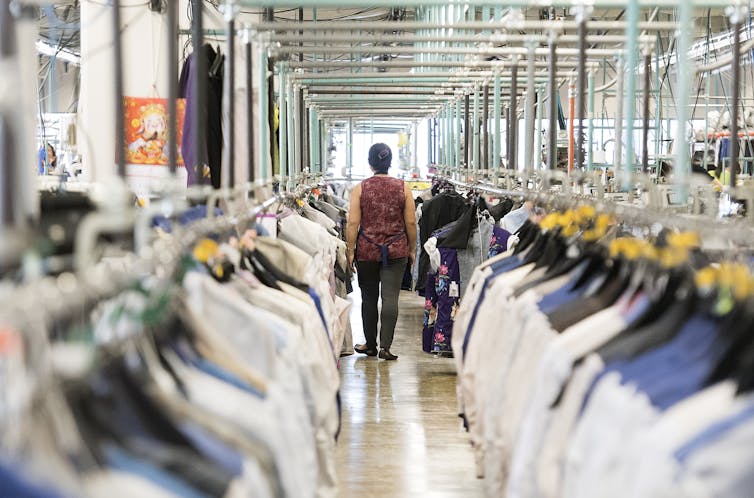
The Covid-19 pandemic has caused loss 225 million jobs around the world.
Young people have suffered significantly, especially in industries that have come to a standstill attributable to pandemic restrictions. Many businesses didn’t survive unemployment is expected to push more people into entrepreneurship.
These entrepreneurs will need support to survive and thrive after the pandemic. Innovation and entrepreneurship will likely be crucial to rebuilding the economy and building its resilience. Therefore, easy methods to support these entrepreneurs and their new ventures is vital.
Business accelerators, a mechanism for supporting and developing new ventures, might want to evolve post-pandemic to support new entrepreneurs.
What are business accelerators?
Business accelerators, also called seed accelerators or acceleration programs, support the development of new ventures. Although they are different from business incubators in many respects, there are many hybrid and evolving business acceleration models.
Accelerators appeared in the early twenty first century with the launch of the program Y Combinator in the United States, considered the best accelerator. Accelerators are generally profit-oriented and often hold equity in their clients’ corporations. Accelerators use a time-boxed cohort approach to focus on accelerating the growth of chosen technology-based startups across a broad range of industries.
For example, B4C is an accelerator of social ventures, nevertheless Canadian Creative Accelerator goals to extend the scope and global reach of Canadian television, film, music and new media production corporations. Business accelerators are becoming increasingly popular in the startup ecosystem of many countries. Currently it is over 3,000 accelerators around the world.
Why accelerators have to evolve
The pandemic resulted in decreased customer demand, lack of worker availability and disruptions in supply chains, which threatened the company’s survival.
In the face of such uncertainty, starting a new enterprise is tougher. Turning an idea into a viable and sustainable business model is more complex. Funds may change into scarce and investors will change into more risk averse. Some industry sectors may not be considered attractive.
It speaks, new opportunities emerging from Covid-19 for revolutionary entrepreneurs. Consider, for example, healthcare needs, the accelerated use of digital technologies and the opportunities presented by the work-from-home trend. Accelerators must evolve their business models to support their portfolio of startups now and beyond the pandemic.
Ravi Roshan/Unsplash
Three-step approach to dealing with Covid-19 promoted by Organization for Economic Co-operation and Development applies to accelerators.
First of all, quick response, reconstruction and resilience are essential. Accelerators around the world have needed to quickly respond as a first step during the pandemic, given the constraints of social distancing and health guidelines. For example, a Canadian creative accelerator has moved entirely online.
The model is easy to breed
In this text published in , my colleague and I proposed a post-pandemic accelerator model for South America, focusing on stages of economic recovery and resilience. This model can be easily replicated in other parts of the world.
The model takes into account the impact of Covid-19 on startups, processes and acceleration services in three areas:
Global Environment: Governments around the world have developed policies and measures to reopen economies and support economic recovery. With a deep understanding of their very own entrepreneurial ecosystems, accelerator managers can support governments’ efforts to spur rapid economic recovery and growth. This increased advocacy role is particularly vital because many government programs are designed for established corporations in specific industry sectors, somewhat than startups trying to capitalize on opportunities in sectors emerging from the pandemic.
Accelerators must subsequently ensure the sustainability and efficiency of those corporations in order to secure funding. They will likely have to look for new sources of financing, especially as governments have gathered large deficits. Accelerators also needs to place greater emphasis on searching for new international partnerships to cut back costs, access new sources of financing and create synergies.
Startups: Emerging post-pandemic trends will create potential entrepreneurial opportunities. Examples include healthcare, IT solutions, online services, digitalization, improved cybersecurity services and opportunities arising from the accelerated deployment of 5G infrastructure. Accelerators might have to revise their startup selection criteria to discover the most promising industries.
Acceleration processes: The first stage of the three-stage model to deal with Covid-19 – rapid response – resulted in accelerators moving online and employees working remotely. Demo days, hallmarks of accelerator programs, have gone online, been postponed or canceled. Some of those modified processes may change into everlasting and turn into positive ones. For example, online processes can save time and facilitate more frequent introductions by investors, founders and mentors. More foreign startups may very well be accepted in distant programs. With increased online activity, accelerator managers might want to foster close collaboration among stakeholders and obtain rapid feedback on proposed changes to their business models.
Acceleration services: The pandemic has created an opportunity to modernize the offer of service accelerators. For example, start-ups will need training in crisis management and risk management to extend resilience, and techniques for identifying and exploiting new market opportunities. Entrepreneurial approaches like implementation and bricolage will change into more critical after the pandemic. Both emphasize flexibility and improvisation of existing resources to manage with an unpredictable future. New programs tailored to the needs of ladies entrepreneurs can be developed as there are more of them women lost their jobs than men during the pandemic, which affected more women entrepreneurs.

THE CANADIAN PRESS/Graham Hughes
The challenges will remain
The pandemic has created a litany of challenges for entrepreneurship that may remain relevant even after the crisis ends.
When deciding to cooperate, entrepreneurs and business accelerators greater than ever have to make sure that they have the same goals and tasks.
In particular, entrepreneurs should pay special attention to selection and exit policies accelerators, the nature and scope of services provided, and what could also be more or less effective in a post-pandemic world. They must fastidiously evaluate the quality and availability of their partners. In turn, accelerators can get well and gain resilience by following suggestions from the post-pandemic accelerator model.

